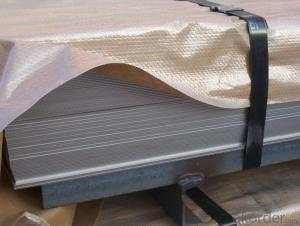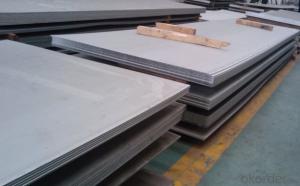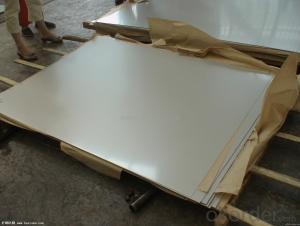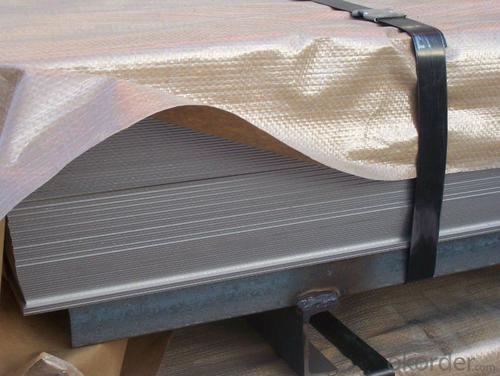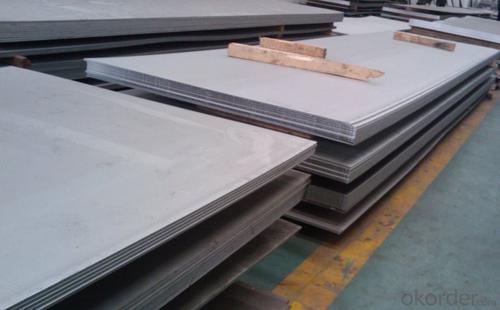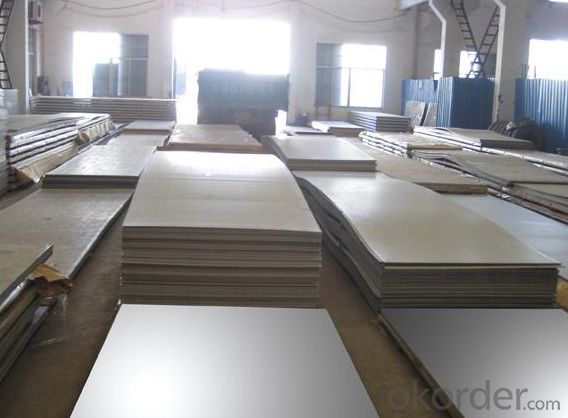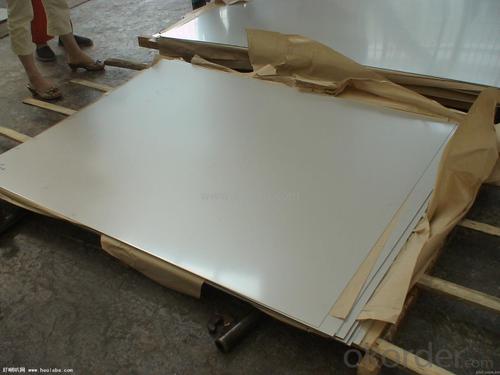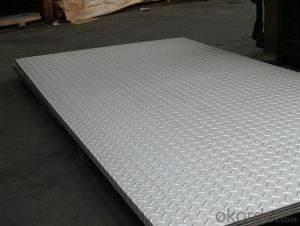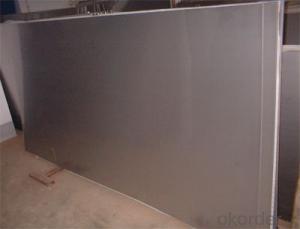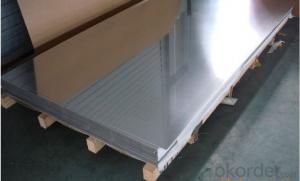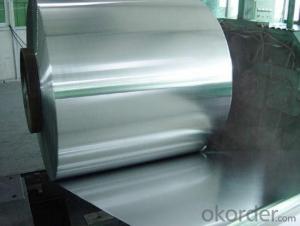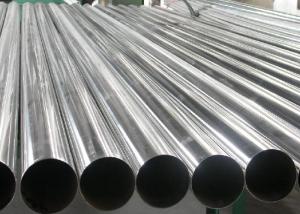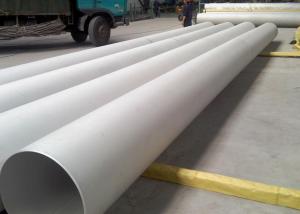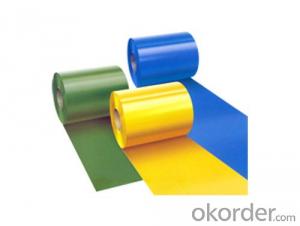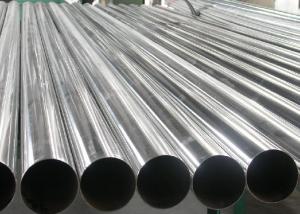Stainless Steel Plate 430 with Normal Size in #4 Polish Treatment
- Loading Port:
- Shanghai
- Payment Terms:
- TT OR LC
- Min Order Qty:
- 10000 m.t.
- Supply Capability:
- 5000000 m.t./month
OKorder Service Pledge
OKorder Financial Service
You Might Also Like
Hot sale stainless steel sheet 201/202/304/304l/316/316l/430
Description of Stainless Steel Sheet:
Description | steel sheet,hot rolled steel sheet,cold rolled steel sheet, steel sheet,sheet,steel plate |
Standard | ASME, ASTM, EN ,BS,GB,DIN, JIS etc |
Application | Steel sheet applies to construction field, ships building industry, petroleum & chemical industries, war and electricity industries, food processing and medical industry, boiler heat exchanger, machinery and hardware fields. |
Packaging | Standard export sea-worthy packing |
Delivery time | 10-30 days |
Quality | No.1 |
Productivity | 500 tons/Day |
Note | Our company has cooperative relation between the domestic agents. Stainless steel sheet can be made accordingto the customers requirements. Fasten delivery. Quality assured. |
Contacts | If you have any question,please feel free contact me. |
Stainless steel sheet surface finish characteristics
Surface finish | Characteristics and application |
2B | The surface brightness and flatness of no2B is better than no2D. then through a special surface treatment to improve its mechanical properties,No2B could nearly satisfy comprehensive uses. |
No.1 | Polished with abrasive belt of grit#100-#200, have better brightness with discontinuous coarse stria, used as inner and external ornaments for building, electrical appliances and kitchen utensils etc. |
No.4 | Polished with abrasive belt of grit #150-#180,have better brightness with discontinuous coarse stria, but thinner than No3, are used as bathtub buildings inner and external ornaments electrical appliances kitchen utensils and food processing equipment etc. |
HL | Polished with abrasive belt of grit #150-#320 on the NO.4 finish and has continuous streaks, mainly used as buildings ornaments elevators, door of building, frontal plate etc. |
BA | Cold rolled, bright annealed and skin-passed, the product have excellent brightness and good reflexivity like mirror, kitchen apparatus, ornament etc. |
8K | The product have excellent brightness and prefer reflexivity can to be the mirror. |
Main Features of stainless steel sheet :
•Escalator, Elevator, Doors
•Furniture
•Production tools, Kitchen appliances, freezers, cold rooms
•Auto Parts
•Machinery and Packaging
•Equipment and Medical devices
•Transport system
Product Details:
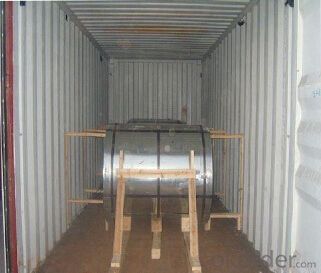
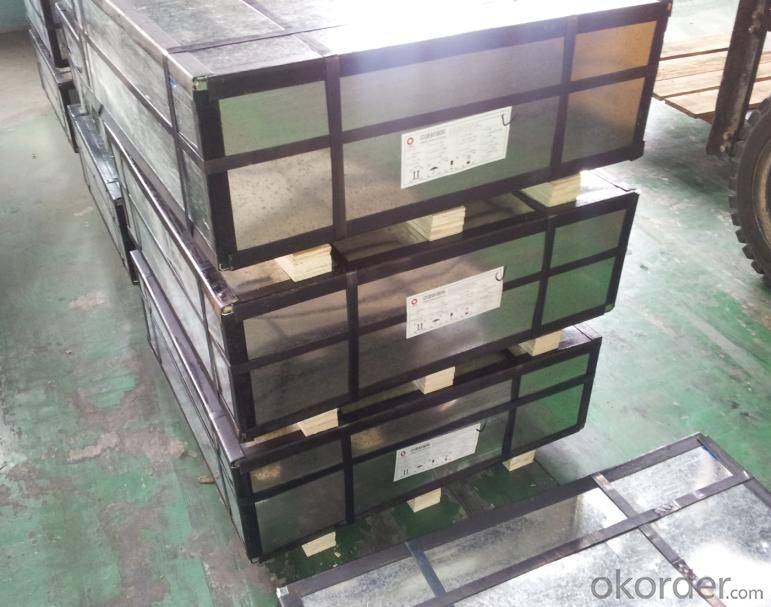
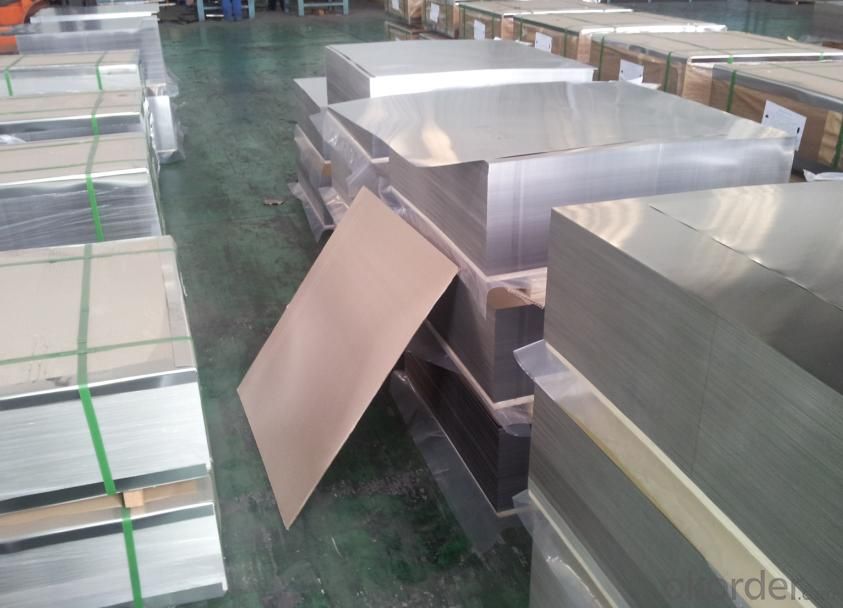
Sandard Seaworth Packing(wooden packing with water proof paper)
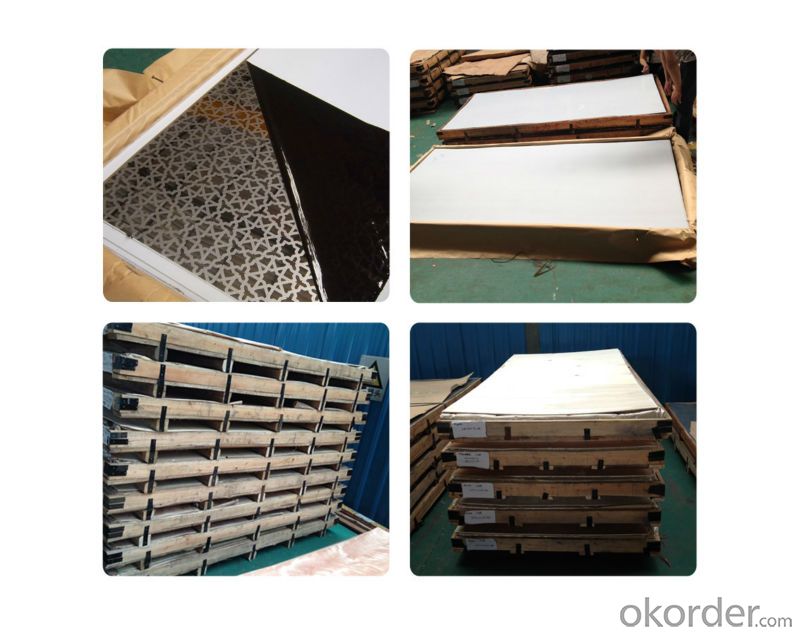
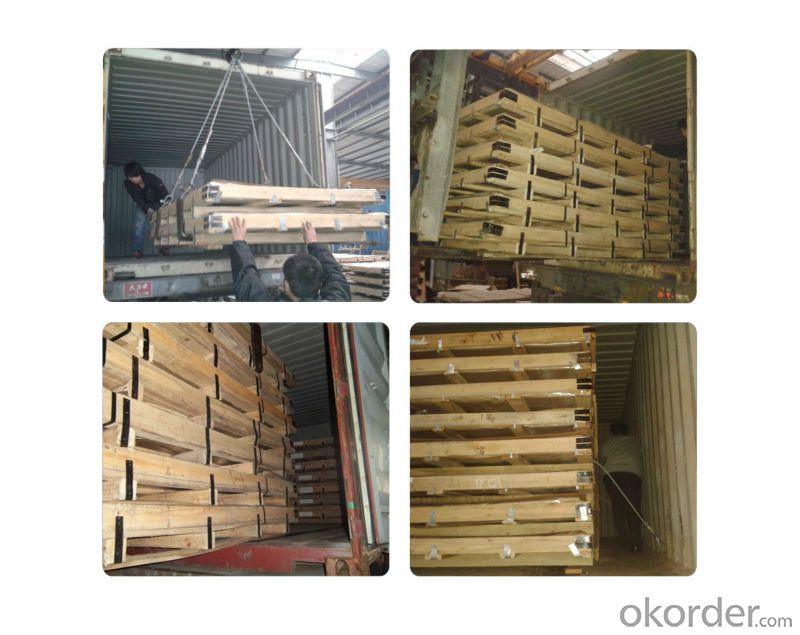
FAQ:
What are we supplying now?
We are specialized in producing stainless steel coil, stainless steel (plate/sheet), and duplex stainless steel for a
prelonged period. We are currently doing grade of steel of 201/202,304/304L, 310S/309S/316L/316Ti/321,410/4
20/430/444/443/409L, and 904L
2. How Many years experience do we have?
We have been exported to more than 20 countries in the past 15 years.
3. How long do we usually reply your request?
We always reply our customer within 24 hours.
If you have any question about stainless steel sheets,donot forget to sending the email to Us! You will get the competitive Price and have a very good experience about the Buying Process! CNBM International Corporation is always your trustful friend!
- Q: Are stainless steel sheets resistant to chlorine?
- Stainless steel sheets possess a general resistance to chlorine, as they are renowned for their corrosion-resistant properties. They are capable of enduring exposure to chlorine without experiencing substantial degradation. Hence, stainless steel sheets prove to be an appropriate option for implementing in environments containing chlorine, such as swimming pools, water treatment plants, and chemical processing facilities. Nevertheless, it is crucial to acknowledge that extended exposure to high concentrations of chlorine or specific chemicals can still induce corrosion or discoloration on the surfaces of stainless steel. To maintain the longevity and aesthetic appeal of stainless steel sheets in chlorinated settings, regular maintenance and adherence to proper cleaning procedures are imperative.
- Q: Can stainless steel sheets be used for decorative wall panels?
- Indeed, decorative wall panels can be crafted using stainless steel sheets. Stainless steel, a highly versatile material, lends itself effortlessly to shaping and manipulation, enabling the creation of numerous designs and patterns. Its sleek and contemporary appearance has made it a favored option for both contemporary and industrial-style interiors. Furthermore, stainless steel sheets come in a variety of finishes, including brushed, mirrored, and textured, offering further customization and enhancing the visual appeal of the wall panels. Moreover, stainless steel boasts resistance to corrosion, durability, and easy maintenance, rendering it suitable for high-traffic areas or environments prone to moisture or humidity. In summary, stainless steel sheets present an elegant and practical solution for decorative wall panels.
- Q: Can stainless steel sheets be used as a backsplash in kitchens?
- Yes, stainless steel sheets can be used as a backsplash in kitchens. They are a popular choice due to their durability, heat resistance, and easy maintenance. Stainless steel backsplashes can add a sleek and modern look to the kitchen while also providing a hygienic and easy-to-clean surface.
- Q: What is the yield strength of stainless steel sheets?
- The yield strength of stainless steel sheets can vary based on the specific grade and thickness of the sheets. Typically, stainless steel sheets exhibit a yield strength between 30,000 and 100,000 psi. However, it is worth noting that different grades of stainless steel possess varying yield strengths. For instance, austenitic stainless steel grades such as 304 and 316 typically exhibit higher yield strengths in comparison to ferritic or martensitic stainless steel grades. Furthermore, the yield strength of stainless steel sheets can also be influenced by their thickness, with thicker sheets generally exhibiting higher yield strengths. Ultimately, it is crucial to refer to the specific grade and thickness of the stainless steel sheets in order to accurately determine their yield strength.
- Q: Are stainless steel sheets suitable for chemical transport containers?
- Yes, stainless steel sheets are suitable for chemical transport containers. Stainless steel is known for its excellent corrosion resistance, which makes it highly suitable for transporting chemicals. It is resistant to many acids, alkalis, and corrosive substances, ensuring that the chemicals being transported are not compromised or contaminated during transit. Additionally, stainless steel sheets are also durable and strong, providing structural integrity to the containers and ensuring the safe transportation of chemicals.
- Q: Can stainless steel sheets be used for roofing applications?
- Indeed, roofing applications can make use of stainless steel sheets. This material, stainless steel, possesses durability and resistance against corrosion, rendering it appropriate for outdoor environments. Its strength, longevity, and aesthetic appeal make it a popular choice in architectural settings, particularly for roofing purposes. Stainless steel roofing sheets come in various thicknesses and profiles, allowing for flexibility in design. Furthermore, as it is fire-resistant and capable of withstanding harsh weather conditions, stainless steel proves to be a dependable option for roofs.
- Q: Are stainless steel sheets good for pressure vessels?
- Yes, stainless steel sheets are commonly used for pressure vessels and are considered to be a good choice. Stainless steel offers excellent resistance to corrosion, high strength, and good mechanical properties, making it suitable for applications that require withstanding high pressures. Additionally, stainless steel has good heat resistance, which is important in pressure vessels where high temperatures may be encountered. It is also worth noting that stainless steel can be easily formed and welded, allowing for the fabrication of complex shapes and designs required for pressure vessel construction. Overall, stainless steel sheets are a preferred material for pressure vessels due to their durability, reliability, and ability to meet the demanding requirements of such applications.
- Q: How do stainless steel sheets compare to other materials like aluminum or carbon steel?
- Stainless steel sheets have several advantages over other materials such as aluminum or carbon steel. Firstly, stainless steel is highly resistant to corrosion, making it suitable for applications in harsh environments or exposure to moisture. In contrast, aluminum is more prone to corrosion, while carbon steel requires additional protective coatings to prevent rusting. Moreover, stainless steel sheets offer superior strength and durability compared to aluminum, making them suitable for heavy-duty applications. Carbon steel may have similar strength properties, but it is more susceptible to corrosion and requires regular maintenance. Additionally, stainless steel sheets provide excellent heat resistance, making them ideal for high-temperature applications that aluminum may not withstand. Carbon steel can handle high temperatures, but it may be prone to oxidation if not properly protected. Lastly, stainless steel sheets have an aesthetically pleasing appearance and are available in various finishes, making them more suitable for architectural and decorative purposes compared to aluminum or carbon steel. Overall, stainless steel sheets offer a combination of corrosion resistance, strength, durability, heat resistance, and aesthetic appeal that sets them apart from other materials like aluminum or carbon steel.
- Q: Are stainless steel sheets resistant to scratches?
- In general, stainless steel sheets have a resistance to scratches. Their durability and strength make stainless steel highly impervious to scratching or denting. Nevertheless, it's crucial to acknowledge that no material is entirely impervious to scratches, and with regular use, stainless steel may acquire minor scratches over time. Nevertheless, these scratches are generally surface-level and can often be effortlessly eradicated or reduced through proper cleaning and maintenance. Furthermore, the degree of scratch resistance can fluctuate depending on the grade and finish of the stainless steel sheet.
- Q: What's the cheapest kind of stainless steel plate? What's the model and how much is it?
- The cheapest is 201, the price is relative to the thickness
Send your message to us
Stainless Steel Plate 430 with Normal Size in #4 Polish Treatment
- Loading Port:
- Shanghai
- Payment Terms:
- TT OR LC
- Min Order Qty:
- 10000 m.t.
- Supply Capability:
- 5000000 m.t./month
OKorder Service Pledge
OKorder Financial Service
Similar products
Hot products
Hot Searches
Related keywords
